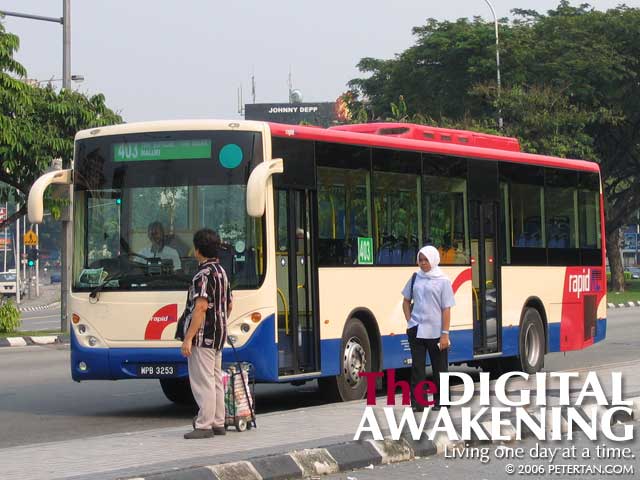All Eyes on Rapid KL – 100 Accessible Buses In 30 Days
What does it take for the government to realise that certain segments of society are often left out in the process of our country’s development? We have just celebrated the 49th year of independence of Malaysia. Have we not learnt anything from all those years of growing up as a nation?
Whether it is done intentionally or otherwise, the omission to respect the rights of disabled persons is discriminatory. The latest grouse of this community is that public buses are not accessible to wheelchair users. This issue is nothing new. I have blogged about it in a simple comparative study of Public Buses in Tokyo, Perth and Kuala Lumpur.
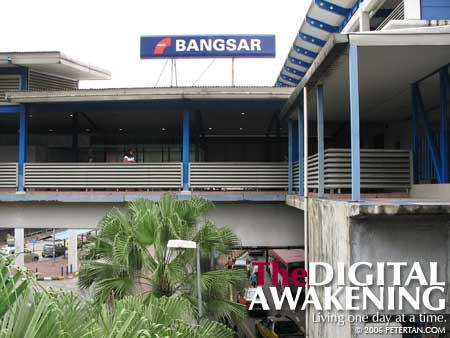
Late Sunday morning last week, Wuan and I gathered at the Bangsar LRT Station bus stop with more than 30 disabled persons, mostly wheelchair users, in an attempt to board the Rapid KL buses. We demonstrated how impossible it was to get into the vehicles. We called ourselves the Barrier-Free and Accessible Transport Group (BEAT). The NST reported the campaign in Disabled want better access to public transport yesterday.
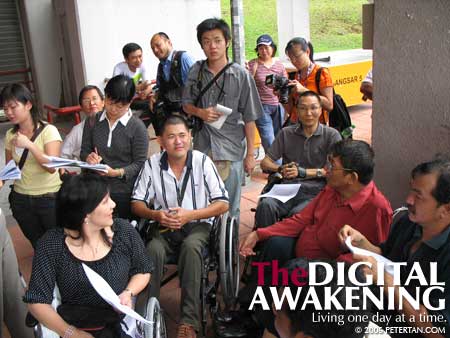
BEAT Coordinator Christine Lee was concerned that no effort has been put into making public transport accessible in Malaysia, especially in Kuala Lumpur. When Katherine Chew, Senior Manager Corporate Communications Division of Rapid KL, was asked why the new buses were not made accessible to wheelchair users, she said, “When Rapid KL took over, we had to get the new buses on the road fast.”
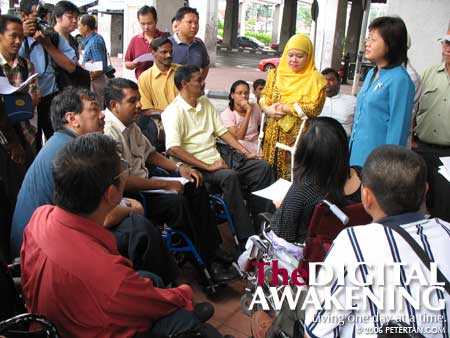
Evidently, Rapid KL was blind to the needs of people who need to use public transport most when they ordered the buses. As a 100% government-owned company under the Ministry of Finance, this reflects badly on the government’s effort in promoting Malaysia as a masyarakat penyayang.
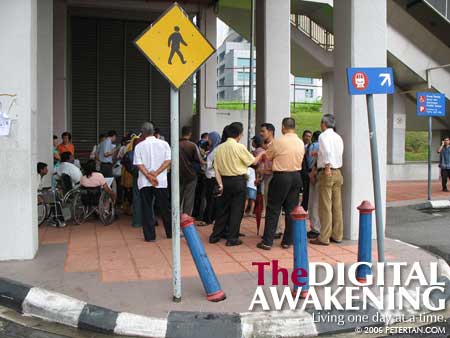
Next to a barrier-free environment, public transport is important in an inclusive society that respects the rights of disabled persons as citizens of equal standing. Without accessible public transport, many are stranded in their homes. They are unable to go out. They lose out on education and work opportunities. These make them even more disadvantaged.
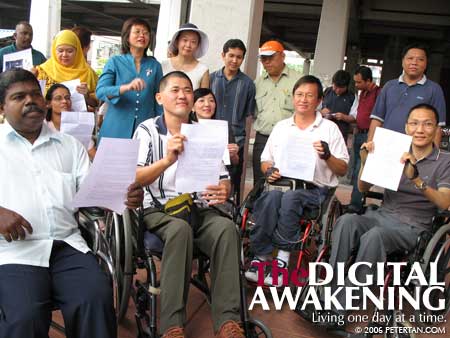
Datin Paduka Chew Mei Fun, Parliamentary Secretary to Ministry of Women, Family and Community Development, who was present at the station concurred that the rights of disabled persons are enshrined in the Federal Constitution. Now that Rapid KL has been caught with their pants down, they announced that 100 new buses to be put into service next month will be equipped with ramps.
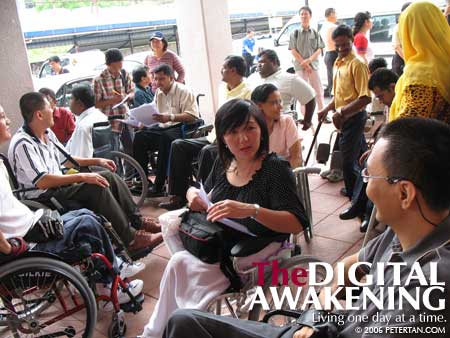
I told Katherine that I am sceptical because time and again, we were disappointed by sweet promises from various parties that were never fulfilled. Even when those promises were carried through they were done in such ways that rendered them non-functional. Good examples are ramps and toilets that do not follow good accessible designs.
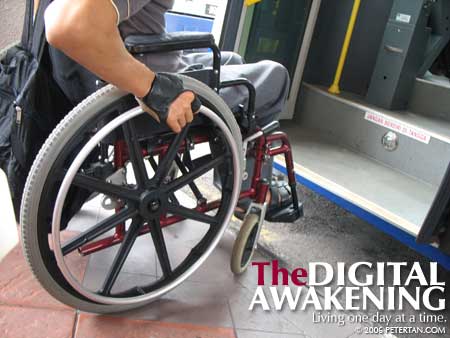
For the sake of all my disabled friends who need to use public transport, I hope that those new buses are truly accessible and safe. We will not accept anything less. The countdown has begun. Will disabled persons be taken for another ride again? Time will tell. 100 accessible buses, 30 days. We are waiting anxiously.
